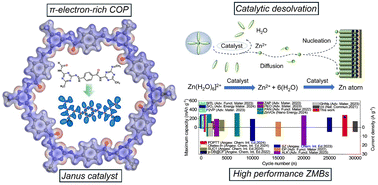Stepwise Screening of Doping Elements for High‐Voltage LiCoO2 via Materials Genome Approach
Advanced Energy Materials, EarlyView.

By employing a stepwise pruning procedure based on DFT, 63 elements are evaluated through 4 computational criteria to identify effective dopants for improving the performance of high-voltage LCO cathodes. Experiment has been conducted regarding the final candidates (Sb and Ge) for empirical validation of theoretical predictions, demonstrating enhanced structural integrity and electrochemical performance of doped-LCO samples at 4.55 V.
Abstract
Lithium cobalt oxide (LCO), due to its high energy and compacted density, has attracted great interests and become a prevalent cathodes in consumer electronics. Elevating the charging cutoff voltage enables the attainment of higher specific capacity, but irreversible phase transitions and side reactions happened above 4.45 V would cause severe capacity fading in LCO. Although element doping is promising to improve the LCO performance under high voltages, only depending on the trial-and-error method for dopant selection is inefficient. Herein, this study examines the feasibility of doping strategies to alleviate the abovementioned high-voltage LCO issues via materials genome approach combing theoretical calculation and experimental validation. Specifically, a five-step pruning process is designed for 63 potential elements to evaluate their effectiveness in reducing chemo-mechanical lattice strain, oxygen release, and cation mixing of LCO during cycling. The final candidates (Sb-doped LCO/Ge-doped LCO) are experimentally synthesized, with reduced lattice contraction, less intergranular microcracks, and fewer surface rock-salt formation in comparison with undoped counterpart, thus exhibiting excellent electrochemical performance. The calculation data obtained from the screening process would benefit for rapid identification of promising dopants and act as a comprehensive map that provides rational guidance to future exploration of multielement doping recipes for high-voltage LCO.
















































































































































